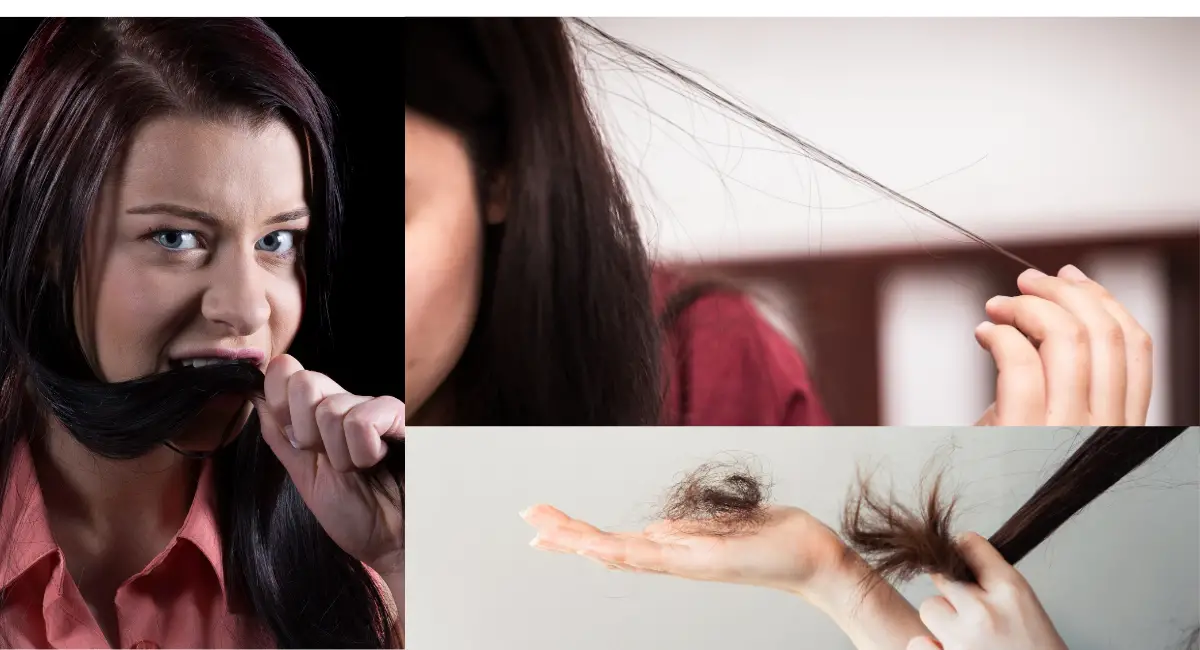
Frotteuristic Disorder: Symptoms, Causes, and Therapy Options
Contents
Introduction
Frotteuristic Disorder is a type of Paraphilic Disorder characterized by recurrent and intense sexual arousal from touching or rubbing against a non-consenting individual, typically in crowded public spaces where the behavior can go unnoticed. The disorder becomes clinically significant when it causes distress or impairment in social, occupational, or other areas of functioning, or when the individual acts on their urges with non-consenting individuals.
According to the Diagnostic and Statistical Manual of Mental Disorders, Fifth Edition (DSM-5), Frotteuristic Disorder is diagnosed when the behavior persists for at least six months and leads to distress or functional impairment. This article will explore the Symptoms, Causes, and Therapy Options for Frotteuristic Disorder in detail.
Symptoms of Frotteuristic Disorder
The symptoms of Frotteuristic Disorder include recurrent sexual fantasies, urges, or behaviors involving touching or rubbing against a non-consenting person. Below is a table outlining common symptoms and examples of how they manifest:
| Symptom | Description/Example |
|---|---|
| Recurrent and Intense Sexual Arousal | Sexual arousal comes from rubbing or touching an unsuspecting individual, often in crowded places like subways or buses. For example, someone may feel sexually excited by brushing against a person in a crowded elevator. |
| Compulsive Urges to Engage in Behavior | Persistent and intrusive urges to touch others in non-consensual ways, often resulting in compulsive actions in public spaces. |
| Distress or Impairment | The individual may experience distress over their compulsive urges or behavior, or it may interfere with their ability to function in social or work environments. |
| Risky or Illegal Behavior | The individual may engage in illegal activities, such as groping or rubbing against others without consent, which can lead to legal consequences or social stigma. |
Causes and Risk Factors of Frotteuristic Disorder
Frotteuristic Disorder is believed to result from a combination of psychological, environmental, and possibly genetic factors. While the exact cause is not fully understood, several key risk factors contribute to the development of this disorder.
Major causes that we will discuss, include: Psychological Factors, Environmental and Cultural Factors, Genetic and Biological Factors:
1. Psychological Factors
Individuals with Frotteuristic Disorder may have underlying psychological issues that drive their need for non-consensual contact. Feelings of inadequacy, low self-esteem, or difficulty forming intimate relationships may lead individuals to engage in inappropriate sexual behaviors as a substitute for emotional intimacy.
- Frotteuristic Disorder is often linked to feelings of inadequacy, powerlessness, or insecurity in social or sexual situations. Engaging in the behavior allows the individual to feel a sense of control or validation.
- Attachment theory suggests that individuals who experience insecure attachments in childhood may develop maladaptive sexual behaviors later in life as a way to cope with unresolved emotional needs.
Michael, a 26-year-old man diagnosed with Frotteuristic Disorder, struggled with feelings of low self-esteem and was unable to form meaningful romantic relationships. He began seeking sexual gratification by brushing up against strangers in crowded spaces.
2. Environmental and Cultural Factors
Environmental factors, such as early exposure to inappropriate sexual content or behaviors, can contribute to the development of Frotteuristic Disorder. Cultural and social norms, along with easy access to crowded public places, may also enable individuals to engage in this behavior without immediate consequences.
- Conditioning theory suggests that early exposure to sexual arousal through inappropriate or non-consensual touching may reinforce the behavior, causing the individual to seek out similar experiences to achieve sexual gratification.
- Social learning theory posits that individuals may model inappropriate sexual behaviors after observing them in others, particularly during formative years.
Tom, a 30-year-old man with Frotteuristic Disorder, reported witnessing inappropriate touching in public spaces during his adolescence. This early exposure may have conditioned his later sexual behavior, leading to his compulsive urges.
3. Genetic and Biological Factors
There may be a genetic or biological predisposition for Frotteuristic Disorder, though this area is less researched. Some individuals may have a higher tendency toward impulsive behaviors or sexual arousal linked to non-consensual contact due to hormonal imbalances or abnormalities in brain functioning.
- Abnormalities in the brain’s prefrontal cortex, which is responsible for impulse control and decision-making, may contribute to the compulsive nature of Frotteuristic Disorder. Impairments in these areas could lead to poor judgment and inability to regulate inappropriate urges.
- Hormonal influences, particularly elevated levels of testosterone, may increase sexual drive, leading to more frequent urges to engage in frotteuristic behaviors.
Sarah, diagnosed with Frotteuristic Disorder, underwent brain scans that revealed abnormalities in areas responsible for impulse control. These findings helped explain her difficulty in managing her urges to engage in non-consensual touching.
Therapy and Treatment Options for Frotteuristic Disorder
Treatment for Frotteuristic Disorder focuses on managing the inappropriate sexual urges and preventing harmful or illegal behavior. Effective therapy options include Cognitive Behavioral Therapy (CBT), Behavioral Therapy, and Pharmacotherapy.
1. Cognitive Behavioral Therapy (CBT)
Cognitive Behavioral Therapy (CBT) is the most widely used therapeutic approach for treating Frotteuristic Disorder. It helps individuals recognize and change problematic thought patterns and behaviors associated with their sexual urges.
- CBT involves identifying the triggers for inappropriate sexual behavior and developing strategies to manage these urges in healthier ways. Therapy also focuses on addressing feelings of inadequacy and improving self-control.
- Techniques such as cognitive restructuring help individuals reframe their thoughts about their urges and recognize the harmful consequences of their behavior.
Michael, who had been diagnosed with Frotteuristic Disorder, sought help through cognitive-behavioral therapy (CBT) to address his condition. Frotteuristic Disorder involves the recurrent urge to touch or rub against others in a non-consensual manner, often in public or crowded settings. In therapy, Michael worked closely with his therapist to identify and explore the specific situations and triggers that led to his urges.
2. Behavioral Therapy
Behavioral Therapy focuses on reducing inappropriate sexual behavior through techniques such as aversion therapy and covert sensitization, which create negative associations with the individual’s compulsive actions.
- Aversion therapy pairs the individual’s frotteuristic urges with negative stimuli (e.g., feelings of shame or guilt) to reduce the desire to engage in the behavior. The goal is to weaken the association between the urge and the resulting sexual arousal.
- Covert sensitization involves having the individual imagine engaging in the inappropriate behavior and then mentally experiencing negative consequences, such as being caught or feeling humiliated, to reduce the frequency of urges.
Tom, who had been diagnosed with Frotteuristic Disorder, engaged in the therapeutic technique of covert sensitization during his sessions. Covert sensitization is a form of behavioral therapy in which individuals are guided to mentally associate their problematic behaviors with negative, aversive consequences. For Tom, this meant that he learned to associate his urges to touch others inappropriately with feelings of intense embarrassment, guilt, and the fear of being caught.
3. Pharmacotherapy
Medications may be prescribed to help manage sexual urges in individuals with Frotteuristic Disorder, particularly when other forms of therapy are not sufficient. Anti-androgens and Selective Serotonin Reuptake Inhibitors (SSRIs) are commonly used to reduce compulsive sexual behavior.
- Anti-androgens, such as medroxyprogesterone acetate or cyproterone acetate, work by reducing testosterone levels in the body, which decreases sexual desire and arousal. These medications are typically used for individuals who struggle with severe compulsive urges.
- SSRIs, which are commonly prescribed for depression and anxiety, can also help reduce obsessive sexual thoughts and compulsive behaviors by regulating serotonin levels in the brain.
Michael, who had been diagnosed with Frotteuristic Disorder, was prescribed selective serotonin reuptake inhibitors (SSRIs) as part of his treatment plan to help manage his compulsive urges. SSRIs are commonly used to treat disorders involving obsessive thoughts and compulsive behaviors, and they can help regulate serotonin levels in the brain.
Long-Term Management of Frotteuristic Disorder
Long-term management of Frotteuristic Disorder requires ongoing therapy, medication (if necessary), and behavioral changes to prevent relapse. Key strategies for long-term management include:
- Continued Participation in Therapy: Regular sessions of CBT or Behavioral Therapy help individuals maintain control over their urges and prevent relapse.
- Medication Adherence: Individuals on anti-androgen or SSRI therapy must adhere to their prescribed regimen to help manage sexual impulses effectively.
- Avoidance of High-Risk Situations: Individuals are encouraged to avoid crowded public spaces where they may be tempted to engage in inappropriate behavior, such as public transportation during rush hour.
Conclusion
Frotteuristic Disorder is a form of Paraphilic Disorder characterized by intense sexual arousal from rubbing against or touching non-consenting individuals in public spaces. The causes of Frotteuristic Disorder include psychological, environmental, and genetic factors. Effective treatment options such as Cognitive Behavioral Therapy (CBT), Behavioral Therapy, and Pharmacotherapy can help individuals manage their compulsive urges and prevent harmful behavior. Long-term management strategies, including ongoing therapy and medication, are essential for preventing relapse and improving the individual’s quality of life.
References
- American Psychiatric Association. (2013). Diagnostic and statistical manual of mental disorders (5th ed.). American Psychiatric Publishing.
- Kafka, M. P. (2014). The paraphilias and depathologizing sexual variants. Archives of Sexual Behavior, 43(6), 1251-1262.
- Laws, D. R., & O’Donohue, W. (Eds.). (2008). Sexual deviance: Theory, assessment, and treatment. Guilford Press.
- McConaghy, N. (1999). Behavioral treatment of paraphilias. The Journal of Sex Research, 36(3), 228-240.
- Seto, M. C. (2013). Frotteurism: Clinical and legal aspects. In Encyclopedia of behavioral medicine (pp. 801-804). Springer.
- Blanchard, R., & Lykins, A. D. (2007). Paraphilias: Origins and controversies. Journal of Abnormal Psychology, 116(3), 694-705.
- Marshall, W. L., & Barbaree, H. E. (2006). The sexual offender: History, risk factors, and treatment. Journal of Consulting and Clinical Psychology, 74(4), 538-546.
- Freund, K., & Watson, W. L. (2004). The treatment of paraphilic disorders: Advances and future directions. Canadian Journal of Psychiatry, 49(4), 259-267.
- Quinsey, V. L., & Berliner, L. (2001). The etiology of sexual offending: A review of research. Psychology, Crime & Law, 7(1), 75-97.
- Shindel, A. W., & Sultani, M. (2008). Sexual masochism disorder: Diagnostic and therapeutic challenges. Journal of Sexual Medicine, 5(6), 1460-1466.
Explore Other Mental Health Issues








